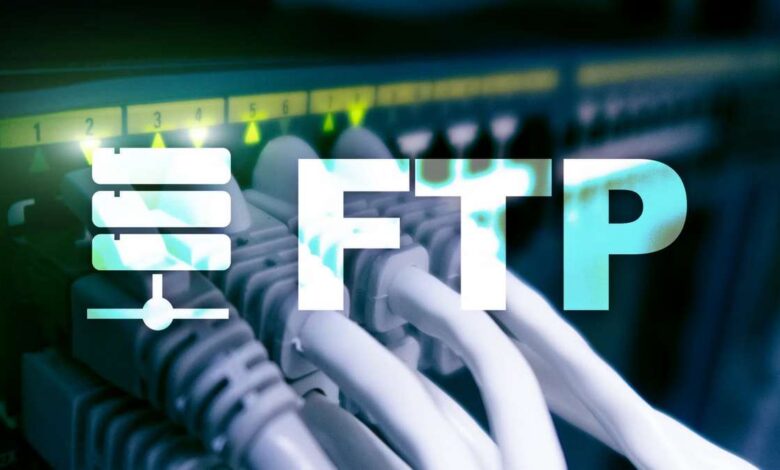
As business owners, we must understand the importance of having a streamlined workflow to keep up with the fast-paced environment that we operate in. One of the biggest challenges in running a business is managing and transferring files efficiently. That’s where FTP servers come in. In this article, I’ll be discussing the benefits of renting an FTP server, as well as how to rent and set one up.
Introduction to FTP Servers
FTP stands for File Transfer Protocol. It is a standard protocol used for transferring files over the internet. FTP servers are servers that are designed to store and share files with other users. These servers are used by businesses of all sizes to transfer files and share data securely.
FTP servers are essential for businesses that need to share large files or sensitive data with clients or other team members. They provide a secure and reliable way to transfer files, ensuring that they are not intercepted or stolen during transit.
The Benefits of Renting an FTP Server
When you rent FTP server, it offers many advantages over buying one. The first benefit is cost savings. Renting an FTP server is much cheaper than buying one outright. This is especially true for small businesses that don’t have the budget to purchase their own servers.
Another benefit of renting an FTP server is that it eliminates the need for maintenance and upgrades. When you rent an FTP server, the provider is responsible for maintaining and updating the server. This means that you don’t have to worry about updates or security patches.
Renting an FTP server also provides you with flexibility. You can easily scale up or down your storage space depending on your needs. This is especially useful for businesses that have seasonal spikes in their storage needs.
The Drawbacks of Buying an FTP Server
Buying an FTP server has several drawbacks. The first is the cost. Purchasing an FTP server can be very expensive, especially for small businesses that have a limited budget. Additionally, buying a server requires maintenance and upgrades, which can be time-consuming and expensive.
Another drawback of buying an FTP server is the lack of flexibility. When you buy a server, you are stuck with a fixed amount of storage space. This means that if you need more storage space, you will have to purchase additional hardware.
Renting vs. Buying a VPS for FTP Storage
A VPS, or Virtual Private Server, is a virtual machine that is sold as a service by an internet hosting service. It is similar to renting an FTP server, but it provides more flexibility and control over your server.
When it comes to FTP storage, renting a VPS is a good option for businesses that need more control over their server. When you rent VPS, you can install your own software and customize your server to meet your specific needs.
However, renting a VPS is more expensive than renting an FTP server. Additionally, you will need to have some technical knowledge to set up and configure your VPS.
How to Rent an FTP Server
Renting an FTP server is a simple process. The first step is to find an FTP server provider that meets your needs. There are many providers available online, so it’s important to do your research and choose a provider that is reliable and meets your storage needs.
Once you have chosen a provider, you will need to create an account and choose a plan that meets your storage needs. The provider will then give you access to your server, and you can start uploading files.
Factors to Consider When Choosing an FTP Server Provider
When choosing an FTP server provider, there are several factors that you should consider. The first is the cost. You should choose a provider that offers a plan that fits your budget.
Another factor to consider is storage space. Make sure that the provider offers enough storage space to meet your needs.
You should also consider the provider’s reputation and reliability. Choose a provider that has a good reputation and provides reliable service.
How to Set Up and Configure Your Rented FTP Server
Setting up and configuring your rented FTP server is a simple process. Most providers offer a web-based control panel that allows you to manage your server.
To set up your server, you will need to log in to your control panel and create an FTP account. You can then upload files to your server using an FTP client.
Tips for Using Your Rented FTP Server Efficiently
To use your rented FTP server efficiently, there are several tips that you should follow. The first is to organize your files. Make sure that your files are organized in a logical manner to make it easy to find and share them.
You should also use encryption to secure your files. This will help to prevent unauthorized access to your files.
Another tip is to use compression to reduce the size of your files. This can help to save storage space and make it easier to transfer files.
Cheap FTP Storage Options for Businesses
If you are looking for cheap FTP storage options for your business, there are several options available. One option is to use cloud storage services such as Google Drive or Dropbox.
Another option is to use a shared hosting service that provides FTP access. These services are generally cheaper than renting an FTP server, but they may not provide as much storage space or flexibility.
Conclusion
In conclusion, renting an FTP server is a great way to streamline your workflows and improve file sharing and transfer efficiency. It is a cost-effective and flexible option that provides many benefits over buying your own server. When choosing an FTP server provider, it’s important to consider factors such as cost, storage space, and reliability. By following the tips outlined in this article, you can use your rented FTP server efficiently and effectively.



